This article was co-authored by Claudia Carberry, RD, MS. Claudia Carberry is a Registered Dietitian specializing in kidney transplants and counseling patients for weight loss at the University of Arkansas for Medical Sciences. She is a member of the Arkansas Academy of Nutrition and Dietetics. Claudia received her MS in Nutrition from the University of Tennessee Knoxville in 2010.
There are 9 references cited in this article, which can be found at the bottom of the page.
This article has been viewed 238,211 times.
There are many benefits associated with maintaining a high-fiber diet. Fiber can help you lower your LDL cholesterol, increase weight loss, and prevent constipation. Fiber also helps you to digest other foods and maintain proper blood sugar levels. All fiber, no matter its source, can cause gas.[1] Since bacteria vary in their ability to digest different types of fiber, different sources of fiber may produce different amounts of gas.[2] Every person’s body will respond to fiber differently, so be patient and willing to try different fiber sources and find the one that most benefits you, without causing excessive bloating or gas.[3]
Steps
Adjusting Your Diet
-
1Understand the difference between soluble and insoluble fiber. It’s important to understand the two forms of fiber, and which foods contain soluble or insoluble fiber.[4] [5]
- Soluble fiber dissolves in water to form a gel-like material, which can lower your cholesterol and blood glucose levels. It also slows down your digestion and is more likely to cause gas. It is found in foods like oat bran, barley, nuts, seeds, beans, lentils, peas, and some fruits and vegetables. Consume more water to help absorb soluble fiber. This is important when taking any fiber supplement as well.
- Insoluble fiber does not dissolve in water. It promotes movement in your digestive tract, so it accelerates your digestion. As a result, it causes you to have less gas than soluble fiber. Insoluble fiber is found in foods such as whole wheat flour, wheat bran, nuts, green beans, and potatoes.
-
2Substitute soluble fiber heavy foods with insoluble fiber heavy foods. It’s important to balance your fiber consumption so you eat both insoluble and soluble fiber sources. This will help you stay healthy and get enough fiber in your diet.[6] But to cut down on gas, try substituting certain soluble fiber foods with insoluble fiber foods.[7]
- For example, oat bran contains mostly soluble fiber, and wheat bran contains more insoluble fiber. So, regular wheat bran cereal or bran muffins may cause less gas than oat bran cereal or oat bran muffins.[8]
Advertisement -
3Use dried beans, rather than canned beans, in your meals. Beans are known to be major sources of gas, but dried beans may cause less gas, post meal. Soaking the dried beans overnight before you eat them can lessen the impact of beans on your digestive system. [9]
-
4Avoid cauliflower, broccoli, and cabbage. These foods are great sources of fiber, but they can cause gas and bloating. If possible, limit your consumption of these foods to once a month, or substitute these foods for other vegetables that are less gas-inducing.[10]
- Leafy green vegetables like spinach, collard greens, and lettuce are mostly packed with insoluble fiber, so they are a good source of nutrients and should cause less gas.
- Avoid raw vegetables, as they are harder for your body to break down and can lead to gas. Steam or cook vegetables before you eat them.[11]
-
5Add fiber to your diet slowly. The bacteria in your stomach and small intestine need time to catch up with your fiber consumption. Adding too much fiber too quickly can cause gas, bloating, cramps, and diarrhea. Increase your fiber intake about 5 grams (0.2 oz) per a day, over a period of 1-2 weeks, to allow your body time to adjust.
- You may experience bloating and gas at the beginning of your fiber intake. But over time, your body will adjust to the fiber and you should see a reduction in bloating and gas.
- Remember to increase fiber with water at the same time. Increase water intake anytime you add fiber to your diet to prevent constipation.
-
6Eat 25-38g (0.9-1.3 oz) of fiber a day if you are an adult. The recommended fiber intake for female older children, adolescents, and adults is no more than 25g (0.9 oz) a day. Older male children, adolescents, and adults shouldn't have more than 38g (1.3 oz) a day.[12]
- Younger children will not be able to eat enough calories to achieve this amount of fiber in their daily diet. But you should introduce whole grains, fresh fruits, and leafy greens to your child’s diet so they can build up their tolerance for fiber over time.
-
7Drink water with every meal. Water helps to push the fiber through your digestive system. Staying hydrated also prevents the fiber from hardening and obstructing your intestine. Dehydration and a buildup of fiber in your body can lead to some uncomfortable moments in the bathroom.[13]
- You should also stay hydrated if you drink coffee throughout the day. Caffeine is a diuretic that pulls fluids from your body and makes you urinate. This can lead to dehydration. For every 1 cup of caffeinated fluid you consume, you should drink 2 glasses of decaffeinated fluids. Too much caffeine in your body, coupled with a fiber rich diet, can lead to constipation and gas.[14]
Using Professional Products
-
1Use a product like Beano. Beano is an over-the-counter medication that contains a natural enzyme to prevent bloating and gas caused by fiber intake. Beano works to reduce the amount of gas the fiber you eat releases, cutting down on the amount of gas you release after a meal.[15]
- In several studies, Beano has been shown to be effective at alleviating bloating and gas after a fiber heavy meal.[16]
-
2Talk to your doctor before you take fiber supplements. Daily use of fiber supplements like Metamucil or Konsyl can be a very effective way to maintain a healthy fiber intake. However, the best way to receive fiber is always through food first. You should check with your doctor before you add fiber supplements to your diet, especially if you are taking other medication that could interact with these supplements.[17]
- Start with a small amount of fiber supplements so your body has time to adjust and you do not get too bloated or gassy. Drink plenty of fluids throughout the day.
- Fiber supplements can decrease your body’s ability to absorb certain medications, like aspirin, warfarin (Coumadin) and carbamazepine (Carbatrol, Tegretol). These supplements can also reduce your blood sugar levels. Your doctor may need to adjust your medications or your insulin if you have diabetes and want to take fiber supplements.
-
3See a doctor if you experience severe abdominal pain, diarrhea, or bloody stools. Bouts of excessive bloating, belching, and gas often resolve on their own, or they will lessen as your body adjusts to your fiber intake. But you should talk to your doctor if your symptoms don’t improve or you experience severe abdominal pain, diarrhea, bloody stools, unintended weight loss, or chest pain.[18]
- These symptoms could be signs of an underlying digestive condition or intestinal issue.
References
- ↑ http://www.medicinenet.com/script/main/art.asp?articlekey=16336
- ↑ http://www.nlm.nih.gov/medlineplus/ency/article/003124.htm
- ↑ http://www.organicauthority.com/how-to-eat-a-high-fiber-diet-without-the-gas-and-bloating/
- ↑ http://www.quickanddirtytips.com/health-fitness/healthy-eating/got-gas
- ↑ http://www.nlm.nih.gov/medlineplus/ency/article/002470.htm
- ↑ http://www.organicauthority.com/how-to-eat-a-high-fiber-diet-without-the-gas-and-bloating/
- ↑ http://www.quickanddirtytips.com/health-fitness/healthy-eating/got-gas
- ↑ http://www.quickanddirtytips.com/health-fitness/healthy-eating/got-gas
- ↑ http://www.organicauthority.com/how-to-eat-a-high-fiber-diet-without-the-gas-and-bloating/
- ↑ http://patients.gi.org/topics/digestive-health-tips/
- ↑ http://www.medicinenet.com/script/main/art.asp?articlekey=16336
- ↑ http://www.nlm.nih.gov/medlineplus/ency/article/002470.htm
- ↑ http://www.medicinenet.com/script/main/art.asp?articlekey=16336
- ↑ http://www.medicinenet.com/script/main/art.asp?articlekey=16336
- ↑ http://www.mayoclinic.org/diseases-conditions/gas-and-gas-pains/in-depth/gas-and-gas-pains/art-20044739?pg=2
- ↑ http://www.ncbi.nlm.nih.gov/pubmed/9663365
- ↑ http://www.mayoclinic.org/healthy-lifestyle/nutrition-and-healthy-eating/expert-answers/fiber-supplements/faq-20058513
- ↑ http://www.mayoclinic.org/diseases-conditions/gas-and-gas-pains/in-depth/gas-and-gas-pains/art-20044739?pg=2
About This Article
If fiber in your diet is making you gassy, try adjusting your diet to include more insoluble fibers. For example, if you get gas after eating oat bran, replace it with insoluble wheat bran. Additionally, try replacing canned beans with dried ones. You can also cut back on gas-producing vegetables, such as broccoli, cauliflower, and cabbage. To minimize any negative effects from adding more fiber into your diet, increase your intake gradually and make sure you’re getting the right amount for your age. Drinking plenty of water with your meals can help, too. For more tips from our Nutrition co-author, including how to use gas-reducing supplements, keep reading!
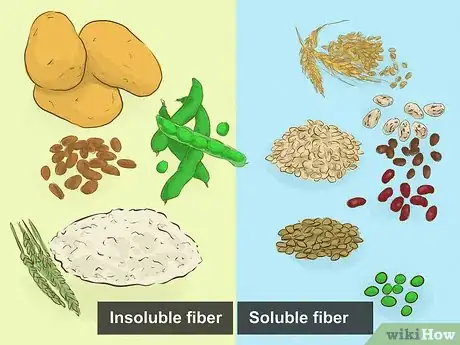
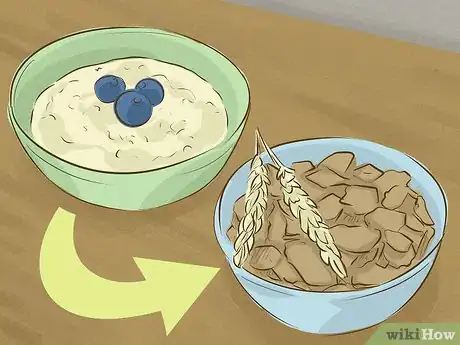
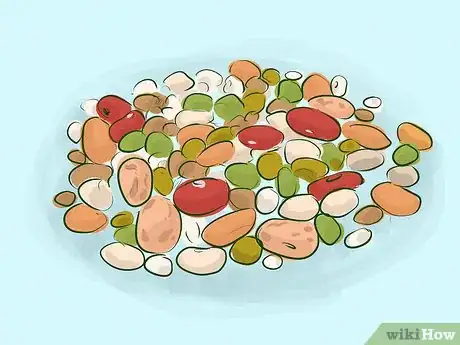
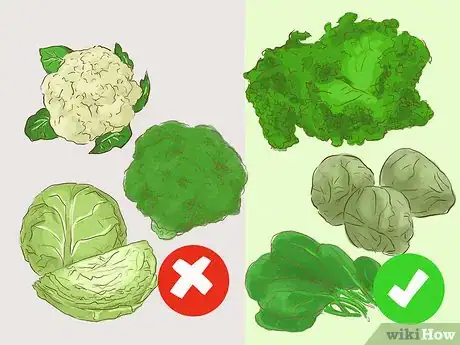
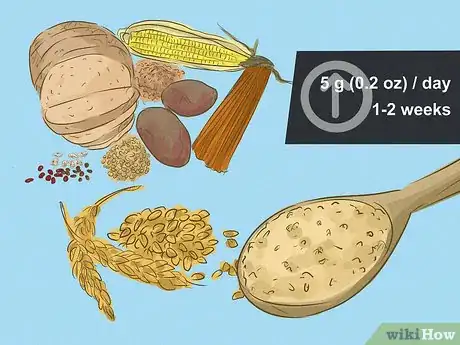
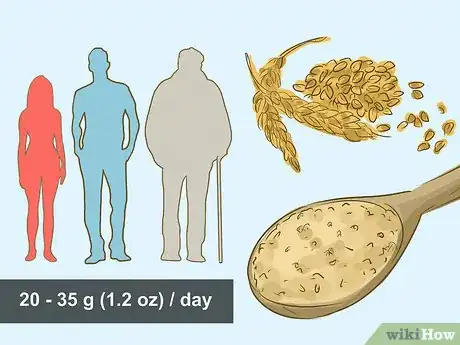
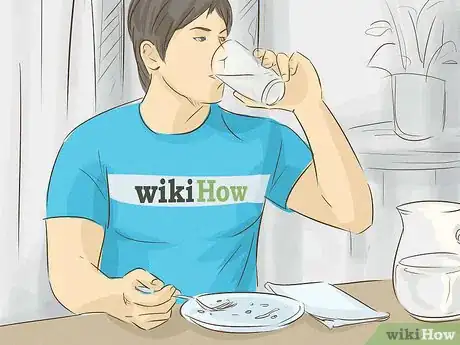
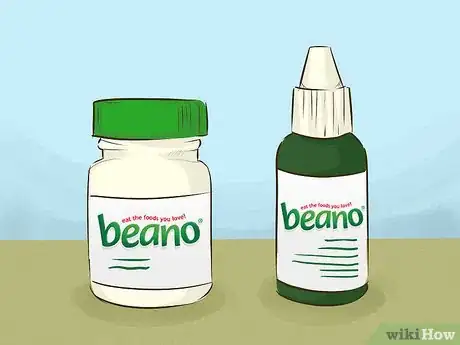
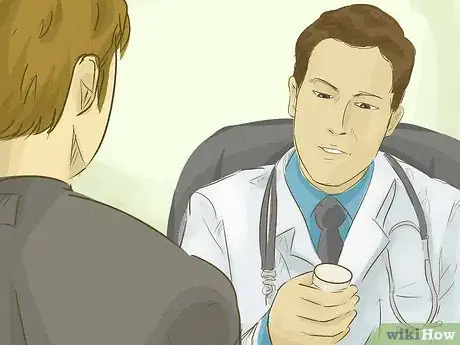
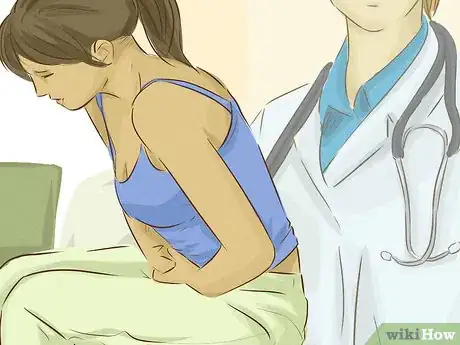
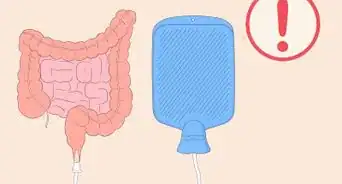



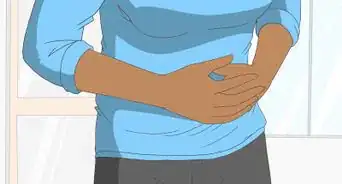
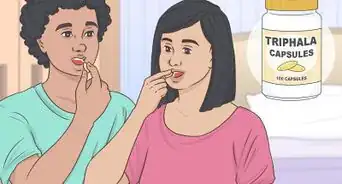

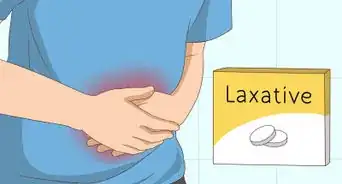

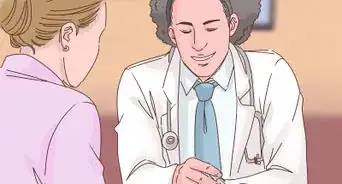

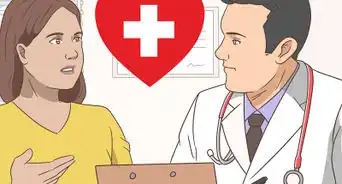




















































Medical Disclaimer
The content of this article is not intended to be a substitute for professional medical advice, examination, diagnosis, or treatment. You should always contact your doctor or other qualified healthcare professional before starting, changing, or stopping any kind of health treatment.
Read More...